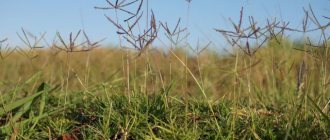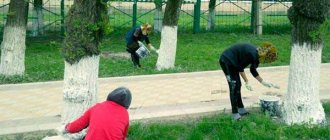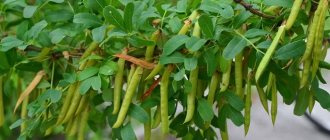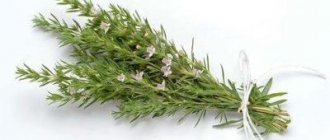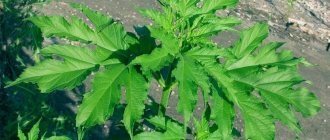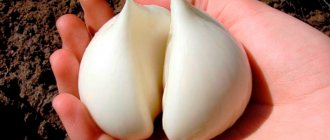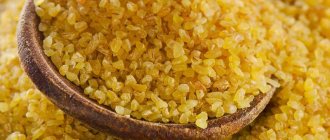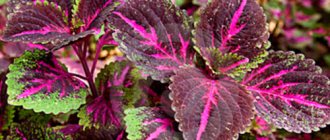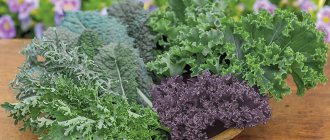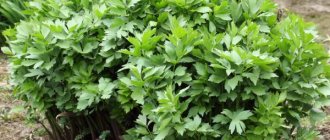Various vegetables, herbs, and flowers are grown in summer cottages, vegetable gardens, and orchards. But the growing process is marred by weeds. As soon as they appear, concerns about their destruction and preventing their occurrence come to the fore. There are many methods for getting rid of weeds, but in order to use them successfully, you need to know the characteristics of the weed and where it spreads. In this article we will tell you what types of weeds there are.
How they appear
Weeds appear on the site against the wishes of the owners. They wage a merciless war with them, but no one can ever destroy them in one sitting, since they can get into the ground in different ways:
- seeds can remain in the ground for a long time, waiting for the right time to sprout;
- together with organic matter or compost;
- with seed;
- accidentally - carried by the wind, animals, people.
Weeds cause a lot of trouble and trouble for plot owners: they depress cultural plantings and spoil the appearance of the plot . Let's look at the main types of weeds.
All weeds are divided into:
- life expectancy;
- methods of reproduction;
- ways of eating.
In turn, plants are divided into perennial and young weeds. There are more than 2,000 weeds.
The perennial grass weed lives in one place for about 4 years. When the seeds ripen, its above-ground part dies, but the roots continue to live. Every year the roots produce new shoots. Perennials reproduce by seeds and vegetative methods. Garden weeds are a large family and include annual and perennial plants.
Annuals
woodlouse
Woodlice is another name for chickweed. Shoots of this weed appear in the garden in early spring. By the time garden crops germinate and seedlings are planted, the garden is covered with a continuous flowering carpet. Most of all, woodlice damages carrot crops.
Shchiritsa is an annual harmful weed that has a great ability to germinate for 40 years from a depth of 3 cm. The stem of the weed can reach a height of 150 cm, the seeds are in a panicle-shaped inflorescence.
Barnyard grass (chicken millet) is a weed plant reaching a height of 120 cm, has wide leaves, tapered towards the edge. The inflorescence looks like a panicle with prickly spikelets, which contains seeds resembling millet. Millet suppresses the seedlings of beets, carrots, and sunflowers, and rainy times can destroy sparse crops.
Tenacious bedstraw is an early annual plant. All its parts cling to everything, even clothes, like a thorny weed. He loves fertile limestone-rich soil. The root of this weed has the form of a rod, the stem can be about 1 meter high, and the stem itself is studded with thorns. The weed blooms in the summer, its flowers form panicles.
Shepherd's Purse
Shepherd's purse is a weed that belongs to wintering annuals. It blooms for a long time, practically blooming all season. On average, 3 generations of plants grow per season, since fallen seeds immediately germinate. Its seeds remain viable for more than 35 years. The plant is low from 20 to 40 cm, the leaves are pinnately dissected, the root has the shape of a rod. The top of the plant is decorated with small white flowers.
Field grass is an annual field weed. The height of the plant is about 40 cm, the rosette of leaves is located close to the ground. During flowering it can produce about 50,000 seeds. Seeds germinate from a depth of 5 cm.
Purslane is a weedy annual with succulent, fleshy leaves and a thick, reddish stem. The stem can be about 60 cm long and covers a large space.
Weed control devices
The most dangerous weeds for lawns include plantain, sow thistle and dandelion. When mowing, buds appear on their roots, which give impetus to the development of additional branches. Such weeds should be removed manually in the first year after planting. In this case, it is advisable to get rid of all the rhizomes.
New plants can form from the remaining parts of the root system.
The situation is often complicated by drought or high humidity. In the first case, it will not be possible to completely remove the root; in the second, the weeds will grow too quickly to get rid of them through mechanical treatment. It is best to start it immediately after prolonged rainfall.
To make the process easier, you can use special equipment. The list includes:
- Extractor. The length of this device is 1.1 m. The procedure is not complicated. The point inserted into the center of the weed plant is pulled out after twisting;
- Root remover. This is the name given to the spatula, which is used to remove rhizomatous weeds. The length of its narrow part is 30 cm. To cover the weed, the metal is bent at the desired angle. The only disadvantage of this tool is the force that has to be applied when using it.
- A good alternative to the last device can be a homemade tool. The metal corner needs to be sharpened to the desired angle. The handle must be welded so that the gardener does not experience inconvenience when using the device. The earthen holes formed as a result of weeding should be immediately filled with pre-prepared soil and sown with grass mixture.
Perennial
As for perennial weeds, there are several particularly dangerous ones.
Sow thistle pink
Pink sow thistle (its second name is thistle) is a well-known perennial thorny weed that oppresses any plantings. The plant is powerful, reaches a height of 1.5 m, the stem of the weed is strewn with thorns. The leaves are lancet-shaped, the edges of the leaves are studded with spines. The thorn weed has a powerful root system that goes down to 6 meters. Each bend of the root has a bud from which above-ground shoots develop. The greatest threat to the garden is its vertical root, so you need to actively fight the roots lying at a depth of about 70 cm.
Creeping wheatgrass can be found everywhere: in the garden, in the vegetable garden, in the field, on the roadsides, on river banks. This is a perennial grass weed. It has well-developed roots, thanks to which it successfully occupies new areas on the site. The weed has a straight stem, long and flat leaves that are rough to the touch. Wheatgrass is highly resistant to poor growing conditions; it reproduces by roots in any soil. You need to wage a constant, irreconcilable war with wheatgrass, otherwise it will actively spread and cover your area with a continuous carpet.
Field bindweed (colloquially called birch) is a climbing perennial weed. It densely entwines plants and with its climbing stems can cover and braid more than 2 m2 of land. Its stems entwine any berry bush, causing significant harm to it. Its stem can reach a length of about 2 meters. The highly branched root system penetrates 5 meters deep into the soil. This makes it much more difficult to fight him. You need to try to dig up as many roots as possible.
Weeds in a summer cottage: description and photo
Creeping wheatgrass is a perennial plant found everywhere, growing in fields, along roads, and living in gardens and orchards. The weed has long, very branched rhizomes, lying at a depth of 5 - 15 cm. The stem of wheatgrass is erect, reaching a height of 40-150 cm. The leaves are also quite long, up to 15-40 cm. This weed is extremely resistant to any weather conditions, not at all picky about soil type. Therefore, it grows very quickly in its habitat, filling the entire space. This weed must be weeded out or disposed of in some other way, especially in places where you are going to plant potatoes. On a lawn, wheatgrass, over time, can completely displace grass, occupying its entire area.
In addition, wheatgrass greatly depletes the soil, drawing nutrients from it. And to form seeds, the weed requires three times more moisture than other plants. Having branched roots, it easily draws water from the soil, depriving other plants of moisture, thereby slowing down their growth and development.
Field bindweed is also a perennial weed. It is especially annoying because it entangles the stems of other plants quite tightly. Just one loach can entangle crops over an area of at least 2 sq.m. The stem of the loach is long and quite strong, so in order to “free” a plant, for example, a berry bush, from it, it will take a lot of time and patience. But it is very difficult to completely remove this weed, since the loach has a branched root system that extends several meters into the ground. When the above-ground part is removed, the roots will form shoots again and again.
Purslane is an annual plant with a thick, fleshy stem and the same leaves. It can rather be classified as a ground cover. Long stems develop quite quickly and can cover a large area in a short time. At the same time, the weed is pulled out quite easily; its root system is only slightly buried. It is important not to miss the moment when the seed pod bursts. Otherwise, next season, in the place where purslane grew in the summer, you will get a real carpet of tiny seedlings.
It should be noted that purslane has been used as a medicinal plant since the time of Hippocrates. Our ancestors believed that its seeds help cleanse the body, and its leaves have wound-healing, antitoxic properties, help with liver and kidney diseases, and vitamin deficiency.
In addition, in the Transcaucasus, Central Asia and the Mediterranean, purslane is used for culinary purposes, in the preparation of salads, soups, seasonings and even as a replacement for capers.
Woodlice is the most ephemeral thing. By the way, the botanical name of this plant is chickweed, and chickweed, as well as canary grass, hernia grass, wood lice, heart grass, is its popular name. Woodlice, despite the short growing season, manages to cause a lot of trouble. One plant produces approximately 15 seeds, which overwinter well and spring up in a continuous carpet in the spring. In general, the germination of woodlice seeds lasts for 2-5 years. Since the leaves of the plant are small and watery, during weeding they simply break off, and the roots remain in the ground and, after some time, woodlice shoots appear again.
Woodlice leaves are rich in carotene and ascorbic acid, so the grass is often given to pets and birds.
And in the old days there was a folk sign - if the chickweed does not open its flowers in the morning and keeps them closed all day - expect rain.
Amaranth (Amaranth) is an annual herbaceous weed. The plant is quite aggressive and is one of the first to appear in wastelands and abandoned agricultural lands. The weed reproduces by seeds; one plant can produce up to 5,000 seeds, maintaining their viability for 5 to 40 years. The stem is straight, pubescent, growing up to one and a half meters in height. The leaves are ovate, the flowers are collected in cylindrical inflorescences. Blooms from June to August.
Common barnyard grass is an annual weed that grows almost everywhere, including weeding vegetable plantings. If spring and early summer are rainy, barnyard grass can choke out the sprouts of young plants. The stem reaches a height of more than a meter, the leaves are bare and sharply rough. The inflorescence is paniculate. The plant blooms from July to September.
Bedstraw tenacious (velcro, scratchy, clinging) is an early annual herbaceous plant. It got its name from the ability of stems and leaves to cling to clothing. The weed has a tap root, pointed leaves, covered with small hooked thorns. The plant grows quickly in fertile, calcareous soils, reaching more than a meter in height. Bedstraw, as noted, especially clogs flax crops.
The plant is used in folk medicine. It is believed that preparations containing bedstraw have anti-inflammatory, blood purifying, and analgesic effects.
Shepherd's purse is an annual overwintering weed that blooms all season. Over the summer, the plant produces several tens of thousands of seeds that remain viable for a very long time, so this weed is found everywhere. The height of the plant is 20-40 cm, the root is thin, spindle-shaped. The weed can be easily pulled out.
The aerial part of the plant is used as a homeopathic remedy. The grass is collected in June-July, before the fruits appear.
Field grass (money grass, toad grass, bug grass) is an annual weed plant, 10-50 cm high, blooming from spring to autumn, producing more than one generation of seeds. The weed is very common, growing in the territory from Western Siberia to the Far East. Interestingly, yarutka seeds contain sinigrin, which has a garlicky odor, so the milk of cows that were fed feed with an admixture of yarutka seeds may acquire a garlicky odor.
Pink thistle (thistle thistle) is a perennial herbaceous weed that is very difficult to remove. The plant has a strong tap root, extending several meters into the soil. Despite the rather tall stem, it breaks off quite easily, so it is practically impossible to pull the weed out by the roots and after a short time sow thistle sprouts appear on the surface again. The plant reproduces vegetatively and in a short time is capable of displacing cultivated plants from the field.
Lawn weeds
The list of lawn weeds includes:
- bluegrass;
- dandelion;
- creeping buttercup;
- moss;
- plantain;
- filamentous clover;
- speedwell filamentous;
- white pigweed;
- sorrel
Let's take a closer look at the main lawn weeds.
Bluegrass is an annual weed that thrives in low places on dense soil. This weed on the lawn is not noticeable at the very beginning of its growth, and when it begins to bloom, it spoils the lawn with unattractive spots. If you get rid of it in time, then it will not remind you of itself for a long time.
Dandelion is an obligatory guest on the lawn, especially on a young one that is not yet fully planted. Its seeds are widely dispersed by the wind. Its fleshy roots contain deposits of nutrients. This must be remembered when fighting for a clean lawn, and not limit yourself to just treating with selective herbicides.
Creeping buttercup
Creeping buttercup is a perennial weed with stems about 1 m long, spreading along the ground. The plant feels comfortable in damp, not very well-lit places. It reproduces by seeds and vegetatively, like other weeds.
Moss - it also loves damp soils in low places. To prevent it from appearing, you need to regularly aerate the lawn and install drainage grooves. If you do not fight it, it will gradually displace lawn grass and contribute to waterlogging of the soil.
Important! The appearance of moss signals the “poverty” of the soil, lack of nutrients and excessive acidity.
Plantain - it can often be seen on heavily compacted trampled soil or where there is stagnant moisture. Individual bushes of the plant are removed with a garden fork. Selective herbicides are used against large concentrations of plantains.
Veronica filamentous
Veronica filamentous loves moist soil rich in nutrients. The plant is low (about 12 cm), has thin stems that form a grassy carpet. The weed reproduces by shoots.
Clover is a perennial weed, 15 to 50 cm high, with a taproot and egg-shaped leaves. Of all the lawn weeds, clover is the one that causes trouble to property owners the most.
Important! Clover has appeared, which means there is a lack of nitrogen in the soil. In addition, phosphorus and potassium fertilizers applied to the soil in the spring can promote clover growth.
White pigweed
White pigweed is a weed that can withstand frost well and grows throughout the season (from early spring until frost). The weed differs from other herbs in that the plant is tall and can grow up to 1.5 meters. The seeds germinate from a depth of 10 cm. It must be removed before it begins to bloom, since one copy produces about half a million seeds that can sprout at different times.
Common sorrel (also known as hare cabbage) is a perennial with strong roots. Rabbit cabbage grows in heaps and easily suppresses lawn grass. It resists well to most chemicals. Therefore, it is best to tear it out by the roots.
Harm and benefits of weeds
Plants have to be divided into harmful and useful according to a principle independent of them: where it grows - in the wild - it is just natural flora, and in beds and lawns, grass at the seams between paving slabs is, of course, weeds. Currently, there are 2,000 plants on the list of weeds, and at least 100 plants are harmful or poisonous to animals.
Such unwanted plants enter our beds constantly or periodically both in the form of seeds and vegetatively in various ways:
- seeds fall into areas with the wind, with animals, with human clothes and shoes;
- move with organic fertilizers (manure, compost) that have not undergone preventive treatment;
- arrive with low-quality seed;
- Certain types of seeds, while in the soil, wait for suitable growing conditions.
Weeds not only cause some harm to cultivated plants, but also interfere with landscape design, not to mention how much extra work gardeners and gardeners have to put in to constantly combat them for the reason that they suppress the naturalness of cultivated plants with their competition and cause damage to the quantity and quality of the harvest; absorb much-needed nutrients and water; worsen photosynthesis conditions for cultivated plants, shading them; may become a hotbed for the spread of pests and diseases; some types of weeds release harmful substances into the soil; Some weeds pose a risk of poisoning domestic animals.
In some cases, some weeds may be useful. For example, plants with a powerful deep root system loosen compacted soil, extracting useful substances hidden at depth, which garden crops cannot do. When removed in time, before flowering, these plants can be used to make compost.
Preventive measures
In the garden
Any weeds in the garden are a nuisance, but if you do not allow them to spread and prevent their appearance, then they will not exist. To do this, you need to fence off a place to build a compost pit into which all plant residues are collected. When the entire harvest has been harvested, you should dig up the garden in large lumps. Then a significant part of the roots will come to the surface and die from frost. In the spring, before planting vegetables, the soil is dug up again and the remaining roots are carefully removed.

